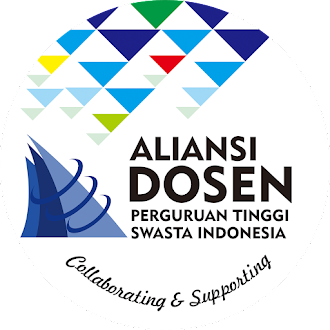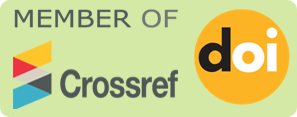GENERATION Z AND SOCIAL MEDIA: COLLABORATING TO ENHANCE COMPETENCIES
DOI:
https://doi.org/10.62567/micjo.v2i2.717Keywords:
Generation Z, Social Media, Collaboration, Competency EnhancementAbstract
Generation Z, as digital natives, possesses a strong attachment to social media, which serves not only as a space for communication and entertainment but also as a medium for developing competencies. This article explores the collaboration between Generation Z and social media in efforts to enhance their skills in the digital era. Using a qualitative approach through in-depth interviews and literature analysis, this study finds that social media plays a crucial role in building competencies such as digital literacy, visual communication, creative marketing, and entrepreneurship. Platforms such as LinkedIn, TikTok, and Instagram have become key channels for self-directed learning, professional networking, and global collaboration. However, this article also identifies significant challenges, including the risk of distraction, consumption of irrelevant content, and the lack of guidance in using social media productively. Based on expert interviews, the study reveals the need for a strategic approach that involves digital literacy education and active supervision from educational institutions and families to optimize the potential of social media. This research contributes to the literature on technology and education by highlighting how Generation Z can effectively utilize social media for personal development and future professionalism.
Downloads
References
Anderson, C. A., & Dill, K. E. (2000). Video games and aggressive thoughts, feelings, and behavior in the laboratory and in life. Journal of Personality and Social Psychology, 78(4), 772–790. https://doi.org/10.1037/0022-3514.78.4.772
Boyd, D. (2011). Social network sites as networked publics: Affordances, dynamics, and implications. In Z. Papacharissi (Ed.), A networked self: Identity, community, and culture on social network sites (pp. 39–58). Routledge.
Boyd, D. M., & Ellison, N. B. (2007). Social network sites: Definition, history, and scholarship. Journal of Computer-Mediated Communication, 13(1), 210–230. https://doi.org/10.1111/j.1083-6101.2007.00393.x
Buckingham, D. (2007). Digital media literacies: Rethinking media education in the age of the internet. Research in Comparative and International Education, 2(1), 43–55. https://doi.org/10.2304/rcie.2007.2.1.43
Castells, M. (2010). The rise of the network society (2nd ed.). Wiley-Blackwell.
Collins, A., & Halverson, R. (2018). Rethinking education in the age of technology: The digital revolution and schooling in America. Teachers College Press.
Dabbagh, N., & Kitsantas, A. (2012). Personal learning environments, social media, and self-regulated learning: A natural formula for connecting formal and informal learning. The Internet and Higher Education, 15(1), 3–8. https://doi.org/10.1016/j.iheduc.2011.06.002
Fullan, M. (2013). The new pedagogy: Students and teachers as learning partners. Pearson.
Greenhow, C., & Lewin, C. (2016). Social media and education: Reconceptualizing the boundaries of formal and informal learning. Learning, Media and Technology, 41(1), 6–30. https://doi.org/10.1080/17439884.2015.1064954
Hargittai, E. (2007). Whose space? Differences among users and non-users of social network sites. Journal of Computer-Mediated Communication, 13(1), 276–297. https://doi.org/10.1111/j.1083-6101.2007.00396.x
Hunt, P., Eagle, L., & Kitchen, P. J. (2018). Balancing strategic and tactical marketing with social media. Journal of Business Research, 82, 30–40. https://doi.org/10.1016/j.jbusres.2017.08.029
Kaplan, A. M., & Haenlein, M. (2010). Users of the world, unite! The challenges and opportunities of social media. Business Horizons, 53(1), 59–68. https://doi.org/10.1016/j.bushor.2009.09.003
Kietzmann, J. H., Hermkens, K., McCarthy, I. P., & Silvestre, B. S. (2011). Social media? Get serious! Understanding the functional building blocks of social media. Business Horizons, 54(3), 241–251. https://doi.org/10.1016/j.bushor.2011.01.005
Livingstone, S. (2008). Taking risky opportunities in youthful content creation: Teenagers' use of social networking sites for intimacy, privacy, and self-expression. New Media & Society, 10(3), 393–411. https://doi.org/10.1177/1461444808089415
Mason, R., & Rennie, F. (2008). E-learning and social networking handbook: Resources for higher education. Routledge.
McLoughlin, C., & Lee, M. J. W. (2010). Personalised and self-regulated learning in the Web 2.0 era: International exemplars of innovative pedagogy using social software. Australasian Journal of Educational Technology, 26(1), 28–43. https://doi.org/10.14742/ajet.1100
Prensky, M. (2001). Digital natives, digital immigrants. On the Horizon, 9(5), 1–6. https://doi.org/10.1108/10748120110424816
Rheingold, H. (2002). Smart mobs: The next social revolution. Basic Books.
Selwyn, N. (2012). Education in a digital world: Global perspectives on technology and education. Routledge.
Siemens, G. (2005). Connectivism: A learning theory for the digital age. International Journal of Instructional Technology and Distance Learning, 2(1), 3–10.
Shirky, C. (2008). Here comes everybody: The power of organizing without organizations. Penguin.
Tapscott, D. (2009). Grown up digital: How the net generation is changing your world. McGraw-Hill.
Veletsianos, G. (2016). Social media in academia: Networked scholars. Routledge.
Bennett, S., Maton, K., & Kervin, L. (2008). The ‘digital natives’ debate: A critical review of the evidence. British Journal of Educational Technology, 39(5), 775–786. https://doi.org/10.1111/j.1467-8535.2007.00793.x
Boyd, D., & Crawford, K. (2012). Critical questions for big data: Provocations for a cultural, technological, and scholarly phenomenon. Information, Communication & Society, 15(5), 662–679. https://doi.org/10.1080/1369118X.2012.678878
Green, H., Facer, K., Rudd, T., Dillon, P., & Humphreys, P. (2005). Personalisation and digital technologies. Futurelab.
Jenkins, H. (2006). Convergence culture: Where old and new media collide. NYU Press.
Ito, M., Horst, H. A., Bittanti, M., et al. (2009). Hanging out, messing around, and geeking out: Kids living and learning with new media. MIT Press.
Mason, R., & Rennie, F. (2008). E-learning and social networking handbook: Resources for higher education. Routledge.
McLoughlin, C., & Lee, M. J. W. (2010). Personalised and self-regulated learning in the Web 2.0 era: International exemplars of innovative pedagogy using social software. Australasian Journal of Educational Technology, 26(1), 28–43. https://doi.org/10.14742/ajet.1100
Boyd, D., & Heer, J. (2006). Profiles as conversation: Networked identity performance on Friendster. Proceedings of the 39th Annual Hawaii International Conference on System Sciences, 59b–59b.
Hargittai, E. (2007). Whose space? Differences among users and non-users of social network sites. Journal of Computer-Mediated Communication, 13(1), 276–297. https://doi.org/10.1111/j.1083-6101.2007.00396.x
Greenhow, C., & Lewin, C. (2016). Social media and education: Reconceptualizing the boundaries of formal and informal learning. Learning, Media and Technology, 41(1), 6–30. https://doi.org/10.1080/17439884.2015.1064954
Rheingold, H. (2002). Smart mobs: The next social revolution. Basic Books.
Selwyn, N. (2014). Digital technology and the contemporary university: Degrees of digitization. Routledge.
Downloads
Published
How to Cite
Issue
Section
License
Copyright (c) 2025 Hendra Jaya, Siska Yustika

This work is licensed under a Creative Commons Attribution-ShareAlike 4.0 International License.


















